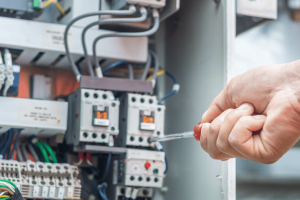When considering ways to enhance the aesthetics and functionality of your home’s exterior, installing awnings can be a game-changer. Awnings not only provide shade but also add an element of sophistication to your outdoor spaces. With numerous options available, choosing the perfect awning for your home requires careful consideration. This guide will help you navigate the process, ensuring that you select an awning that complements both your practical needs and the overall design of your property.
1. Understanding the Benefits of Awnings
Awnings are a versatile addition to your home that can provide numerous benefits. Here are some key reasons homeowners opt for awnings:
- Sun Protection: One of the primary functions of awnings is to shield your outdoor spaces from harmful UV rays. Whether over a patio, balcony, or windows, awnings reduce sun exposure, keeping your spaces cooler and more comfortable.
- Energy Efficiency: By blocking direct sunlight from entering your home, awnings help maintain a more consistent indoor temperature, reducing the need for air conditioning and lowering energy costs.
- Enhanced Outdoor Living: Awnings create more usable outdoor spaces by providing shelter from the elements. They extend the usability of patios, decks, and other outdoor areas during rainy or sunny days.
- Improved Curb Appeal: Available in a variety of styles, colors, and materials, awnings can be a beautiful addition to your home’s exterior. They enhance the look of your property while increasing its overall value.
2. Types of Awnings for Homes
Before selecting the ideal awning, it’s essential to understand the different types available. Each type offers unique advantages, depending on your specific needs.
- Retractable Awnings: These awnings can be extended or retracted as needed, offering flexibility for changing weather conditions. They are a popular choice for patios or decks, as they provide shade when desired and can be easily retracted for open-air enjoyment.
- Fixed Awnings: Fixed awnings are permanently installed and provide continuous protection from the sun and rain. They are often used for windows, doors, or larger outdoor spaces and offer a more permanent solution.
- Freestanding Awnings: These awnings are supported by their own frame and do not require mounting to a structure like a wall. They are perfect for creating standalone shaded areas in your garden or backyard.
- Window Awnings: Typically smaller and placed directly above windows, these awnings offer protection from the sun while adding character to the home’s exterior. They can be fixed or retractable and are excellent for reducing indoor temperatures.
3. Materials to Consider for Awnings
The material of your awning plays a critical role in its durability, appearance, and maintenance. Common materials include:
- Canvas: A classic choice, canvas offers a stylish look while providing excellent shade. It is breathable and resistant to fading, but it may require periodic cleaning and maintenance to prevent mold and mildew.
- Aluminum: Aluminum awnings are lightweight, durable, and low-maintenance. They are perfect for those seeking a long-lasting option with a sleek, modern appearance.
- Polyester and Acrylic Fabrics: These materials are highly resistant to UV rays, mold, and mildew. Acrylic is known for its water resistance and color retention, making it a great choice for areas with frequent rain or intense sun exposure.
- Vinyl: Vinyl-coated fabrics are waterproof, easy to clean, and resistant to fading. They are ideal for regions with harsh weather conditions and require minimal upkeep.
4. Factors to Consider When Choosing an Awning
Selecting the perfect awning for your home involves considering several factors to ensure that it suits both your style and practical needs.
- Climate and Weather Conditions: The local climate plays a significant role in determining which material and type of awning will perform best. For instance, in areas with heavy rain, water-resistant materials like vinyl or acrylic are ideal, while retractable options work well in regions with fluctuating weather patterns.
- Size and Placement: Measure the area where the awning will be installed to ensure that you choose the right size. It’s essential to consider the width and projection of the awning to achieve the desired coverage without overwhelming the space.
- Style and Aesthetic: The awning should complement your home’s exterior design. Consider your home’s architectural style and choose a color and material that enhances its overall look. For instance, traditional homes may benefit from canvas awnings in muted colors, while modern homes might opt for sleek aluminum or acrylic models.
- Budget: Awnings vary in price based on material, size, and type. Set a budget before beginning your search to help narrow down your options. Don’t forget to factor in installation costs, especially for motorized or retractable awnings.
5. Installation and Maintenance
Once you’ve selected the perfect awning, it’s essential to ensure proper installation and maintenance. Professional installation ensures that the awning is securely attached and functions as intended. Maintenance requirements vary by material, but regular cleaning and inspection will prolong the life of your awning and keep it looking its best.
Conclusion
Choosing the perfect awning for your home’s exterior is a decision that requires careful thought and planning. From understanding the benefits and types of awnings to selecting the right materials and style, each factor contributes to your overall satisfaction with the final choice. Whether you’re seeking protection from the sun or a stylish addition to your outdoor living area, the right awning will provide lasting benefits for your home and family.




